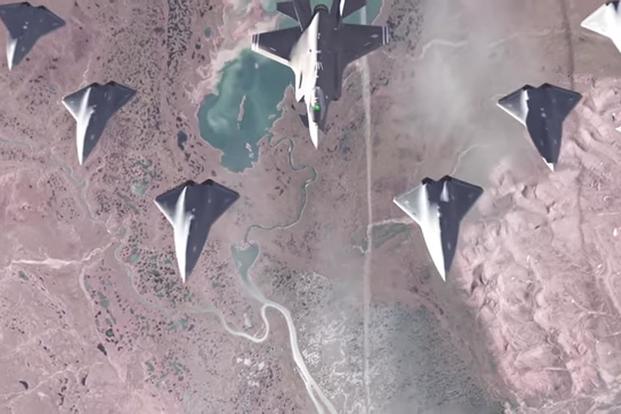The U.S. Air Force has quietly built and flown a brand-new aircraft prototype that could become its next-generation fighter, the service's top acquisition official announced Tuesday.
Dr. Will Roper, assistant secretary of the Air Force for acquisition, technology and logistics, revealed during the virtual 2020 Air, Space and Cyber conference that the new aircraft is part of the Next Generation Air Dominance (NGAD) program, which defies the traditional categorization of a single platform, featuring a network of advanced fighter aircraft, sensors and weapons in a growing and unpredictable threat environment.
Read Next: Air Force Cargo Planes Could Get New Job in the Fight
"NGAD right now is designing, assembling, testing in the digital world -- exploring things that would have cost time and money to wait for physical world results," he said. "NGAD has come so far that the full-scale flight demonstrator has already flown in the physical world."
During a roundtable with reporters, Roper declined to give specifics on the project, except that the craft was created using digital engineering, which allows the service to bypass the regular manufacturing process for parts and gives developers more flexibility to design and change blueprints. The service announced Monday that any weapon made using digital concepts will have an "e-" prefix in an effort to showcase these innovative processes.
The new aircraft has "broken a lot of records and is showing digital engineering isn't a fluke," Roper said. He declined to comment on whether the defense industry has taken part in the endeavor.
While he touted the expedited process of digital methods, "we don't want our adversaries to know what they are," Roper added.
The news comes four years after the Air Force laid out initial plans for what its future fighter jets might look like.
During the 2019 Paris Air Show, Roper said discussions were ongoing within the service about the need for a proposed sixth-gen fighter concept, which could be the successor to the F-22 Raptor and F-35 Joint Strike Fighter, or something more elaborate. That October, the service cut the ribbon on the "Program Executive Office for Advanced Aircraft" during a ceremony at Wright-Patterson Air Force Base, Ohio.
The Air Force hopes to move fast on its futuristic projects. Roper last year debuted the Digital Century Series acquisition model, with the goal of using interconnectable, agile software and competitive technology prototyping to put together a combat-ready fighter jet in an estimated five years' time. The service recently finished a business case analysis on the model's validity, according to Defense News.
The Navy last month revealed that it has established its own NGAD program office in an effort to speed up the fielding of a new fighter prior to the 2030s, according to USNI News. But plans and discussions with industry are in the very early stages, USNI said.
The Air Force has proven it can accelerate and manufacture aircraft: The first "Century Series" aircraft initiative debuted in the 1950s and produced fighter-bomber variants such as the F-100 Super Sabre, which took roughly two and a half years to develop.
While many envision a futuristic manned fighter as a successor to today's fifth-generation platforms, Roper has said the NGAD program could include fighters and autonomous drones fighting side-by-side.
For example, the autonomous Skyborg -- which aims to pair artificial intelligence with a human piloting a fighter jet -- is intended for reusable unmanned aerial vehicles in a manned-unmanned teaming mission; the drones are considered "attritable," or cheap enough that they can be destroyed without significant cost.
In July, the service chose Boeing Co., General Atomics Aeronautical Systems Inc., Kratos Unmanned Aerial Systems Inc. and Northrop Grumman Systems Corp. to move forward on the Skyborg program.
-- Oriana Pawlyk can be reached at oriana.pawlyk@military.com. Follow her on Twitter at @oriana0214.
Related: Air Force Launches Office to Plan Future Fighter Jets












